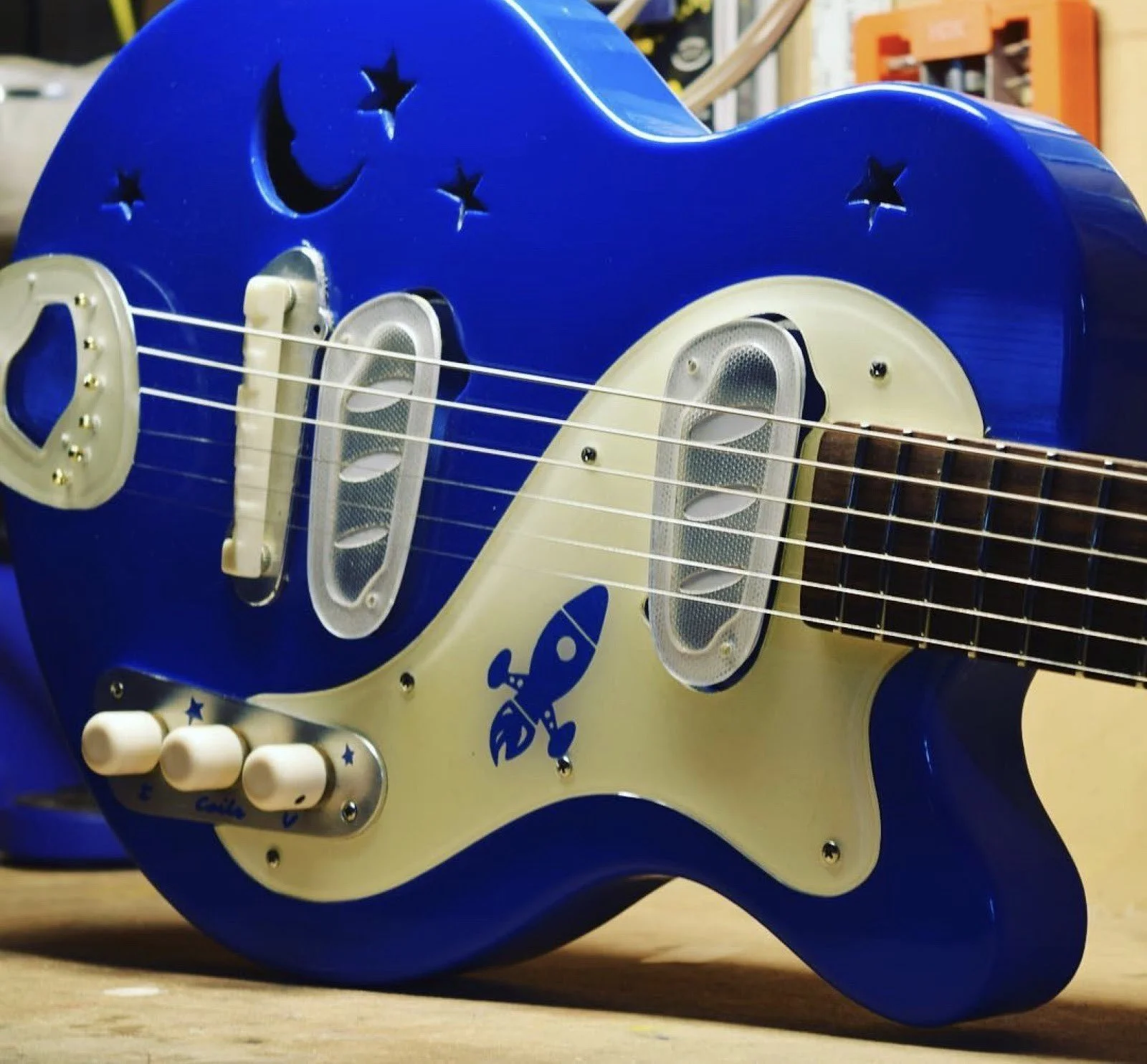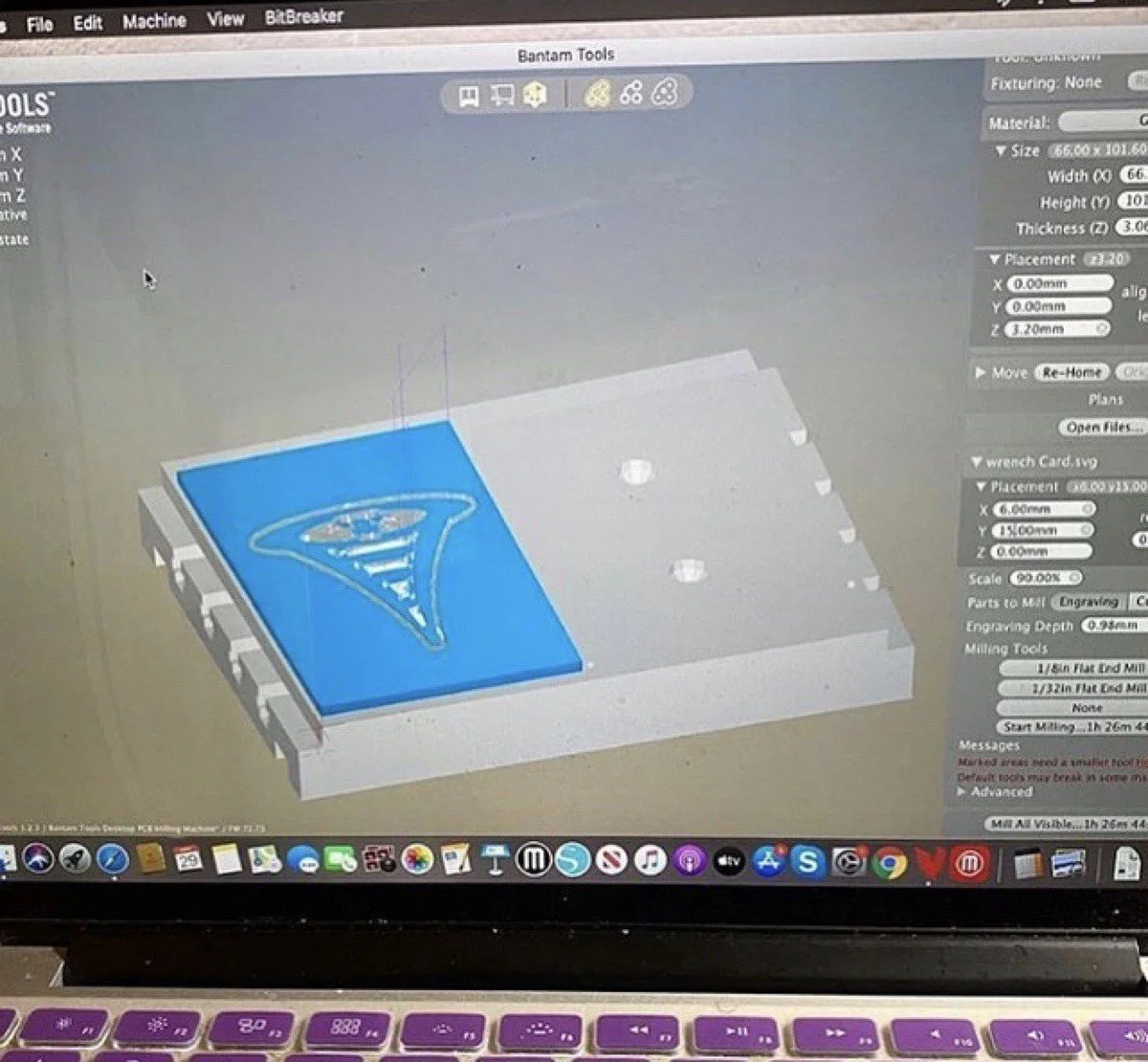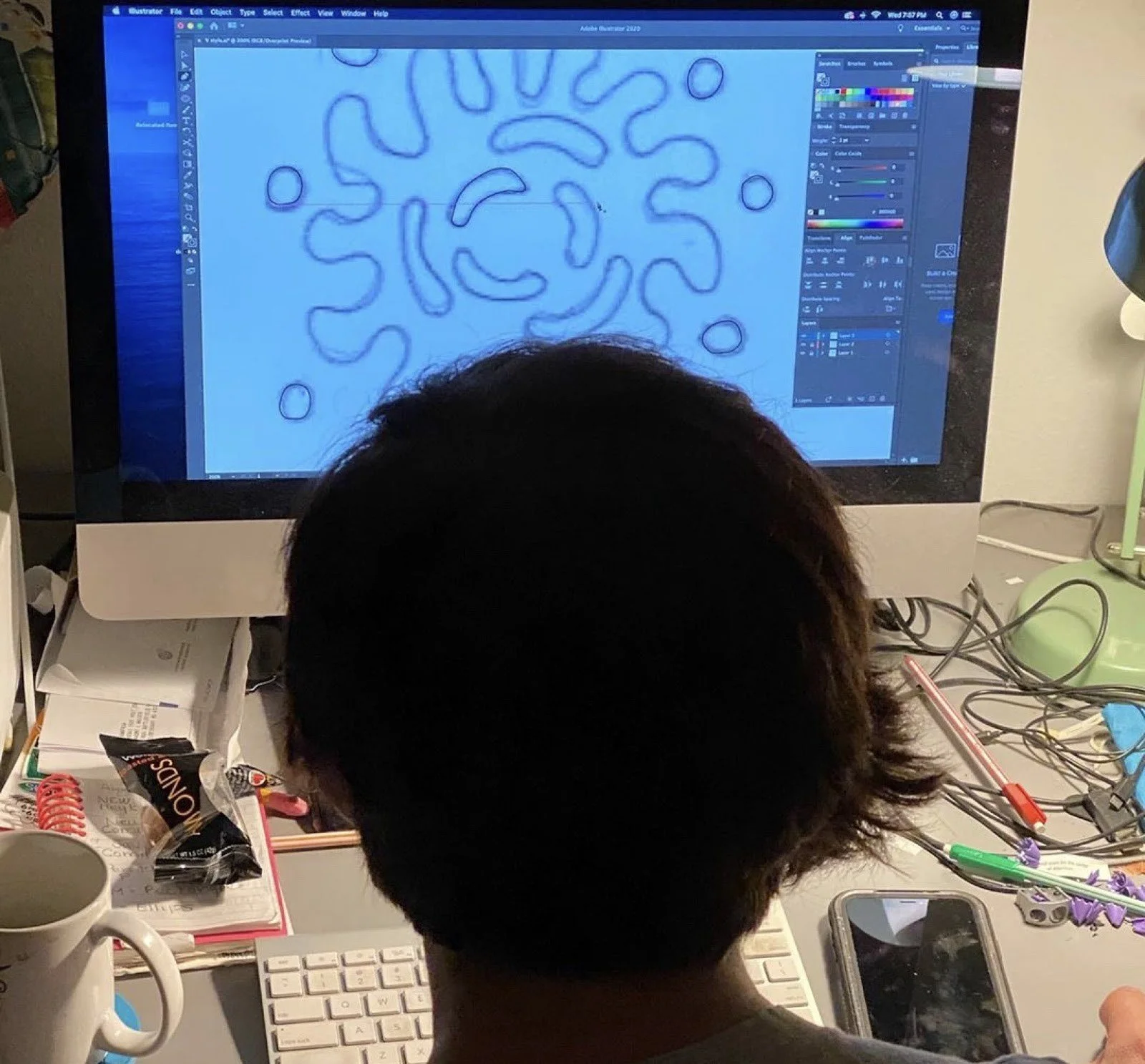Luthier Michael King Uses CNC Machining to Make His Mark
At Bantam Tools, we’re proud to manufacture CNC machines that empower users to explore the cutting edge of digital fabrication. Luthier and Bantam Tools remote resident Michael King is one of these trailblazers. Michael is using digital fabrication tools like our versatile Desktop PCB Milling Machine, 3D printers, and more to innovate parts for his custom electric guitars. For the last few months, Michael has incorporated our PCB mill into his prototyping and manufacturing workflow. Here’s what he shared about his experience.
1. You’re a luthier. Tell us more about how you got into making custom guitars.
Back in the 80s, I got a job at a music shop. I didn’t have any music experience at that time, but an employer whom I had been working for (before he, unfortunately, passed away) had recommended me for the job because I was a fast learner and good with my hands. It turned out to be an amazing experience! From there, I went on to apprentice in a violin shop, where I gained the skills and knowledge to build acoustic instruments, as well as electric ones. Before starting Cowbrand Designs, I was also a certified warranty repairman for several name brand guitar companies, including Gibson and National Reso-Phonic.
2. What made you decide to start using digital fabrication tools to make your guitars?
I started out making replicas of popular brand guitar models, like Gibson, which was easy because most off-the-shelf, aftermarket parts are made to fit these kinds of guitars. But I wanted my own identity and something that was going to make my guitars stand out. And the first place I started was with my electromagnetic guitar pickups. Their sound is influenced by several factors, including output, magnet type, wire type, and, most important to me, their geometry.
Typically, there are only three types of pickups to choose from: Strat, humbucker, and P-90. Seriously, every guitar has one of these types on it, and it hasn’t changed since electric guitars were first created in the 50s! It sounds crazy, but the reason is that consistency and precision are paramount in designing and manufacturing pickups. So if I was going to innovate my pickup design, I would need tools that would ensure consistency and precision. This led me to 3D printing and brought me into the world of digital fabrication. The MakerBot Replica was a game-changer in helping me innovate and develop my own pickup design.
And then I discovered CNC machining, which would allow me to use different materials. With 3D printing, I was limited to resin. But with a CNC machine, I could explore different geometric designs using metals like aluminum, which can warm up the sound of a pickup. This led me to the Bantam Tools Desktop PCB Milling Machine. Even though it’s optimized for circuit boards, it can machine aluminum, brass, engineering plastics, and woods! It was ideal for what I wanted to experiment with and explore. The idea that these digital fabrication tools can allow me to push beyond the three pickup types is awesome!
3. Tell us more about the projects you’ve been using the Desktop PCB Milling Machine for.
I’ve been using the Desktop PCB Milling Machine in many ways! I started out milling PCBs to act as bottom plates for my humbucker pickups, which also allowed me to create a more efficient double-coil version of my first design I had started with my 3D printer. The new method eliminates the use of internal lead in-and-out coil wire, and it saves so much more space inside the pickup. The new design also allows for the option of either two single leads or one grounded shielded lead. There are advantages to both, but it ultimately boils down to the guitarist’s preference.
Next, I moved on to milling and engraving my control plates. Before I got the PCB mill, I had been creating the control plates by hand using a benchtop bandsaw, paint, and stencils. Using the Desktop PCB Milling Machine saves a lot of time, and the results have taken the look of my guitars to the next level!
I’m also milling aluminum tailpieces, headstock badges, and other commonly used parts that I used to have to buy. Now my guitars look like my guitars and have helped me continue to build my own identity. I think it’s important to cultivate your own identity in the guitar-making industry. With CNC machining and 3D printing, I’ve been able to innovate and customize in many ways, and people have been taking notice. I’ve been getting a ton of great responses, and I’m sure that in time Bantam Tools’ CNC machines and other digital fabrication tools will be in a fair amount of luthier workshops.
4. What has the Desktop PCB Milling Machine allowed you to do that you couldn’t before?
The machine enables me to rapidly prototype, duplicate, and expand on new and existing ideas. I typically use plastic to dial in my designs and then machine the finished part in aluminum. The machine has also helped me cut down on the time it takes to make small wooden parts that in the past I made by hand. A part that used to take a day and a half to get just right is now done perfectly in 30 minutes to an hour.
Lately, I’ve also been experimenting with the design of a nut, which is a string guide at the end of the fretboard. There’s no room for error in making this small part, and it’s critical to quality and playability, to the point where it can make or break a whole guitar build. Each string slot’s depth and width must be filed and shaped by hand to an exact standard. This is why having a tool like the Bantam Tools Desktop PCB Milling Machine is so helpful. Plus, I’m not able to offer an aluminum version of the nut, as well as a traditional version — usually the nut is made from bone!
5. You’ve mentioned that you’ve 3D printed parts for your guitars. How has it been going from 3D printing to CNC machining? Were there any major differences or challenges you needed to overcome?
I’m amazed at how quickly I was able to move from 3D printing to the CNC machining with the Desktop PCB Milling Machine. I was able to pull the PCB mill right out of the box, start machining, and get results. To be able to hit the ground running is huge! I’m a hyper-creative person, so thinking about something one minute and then prototyping multiple iterations of it in the same day is just amazing. And to do it in the actual material it will be made with, in my own shop, is next level. Plus, I’ve picked up a few new skills along the way. Since using the PCB mill, I’ve learned more about Adobe Illustrator and EAGLE, and I’ve started incorporating them into my workflow.
6. What are three tools you can’t live without?
The Bantam PCB Milling Machine is now number one, for sure! It’s not essential for machining my pickups. Also measuring tools, like my calipers, are a must. Another very specialized tool is a CNC machine headstock slotting jig. Having this jig has been a game-changer in terms of saving time and ensuring precision. It looks like something from a NASA space mission!
About Michael King
Michael King is the owner and operator of Cowbrand Designs. He makes custom guitars from reclaimed wood that’s over 100 years old, in combination with innovative digital fabrication practices. When he’s not making his one-of-kind guitars, he’s playing them.
Follow Bantam Tools on Instagram, Facebook, Twitter, and be sure to subscribe to the Bantam Tools mailing list to receive more content like this.











